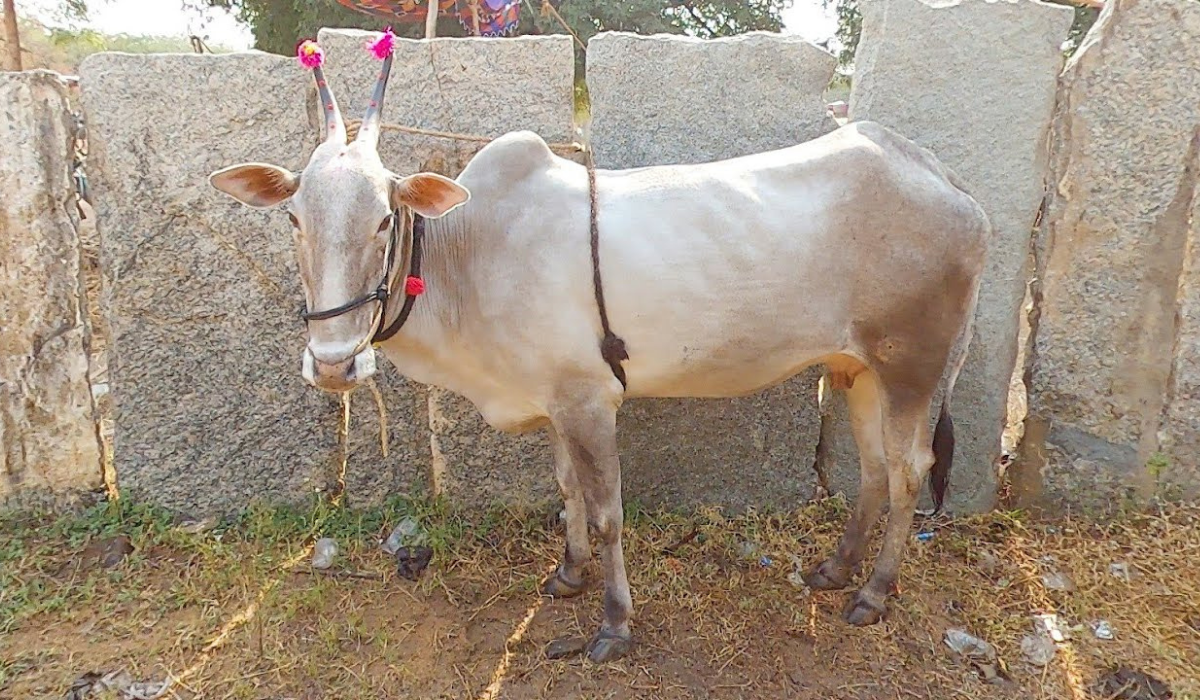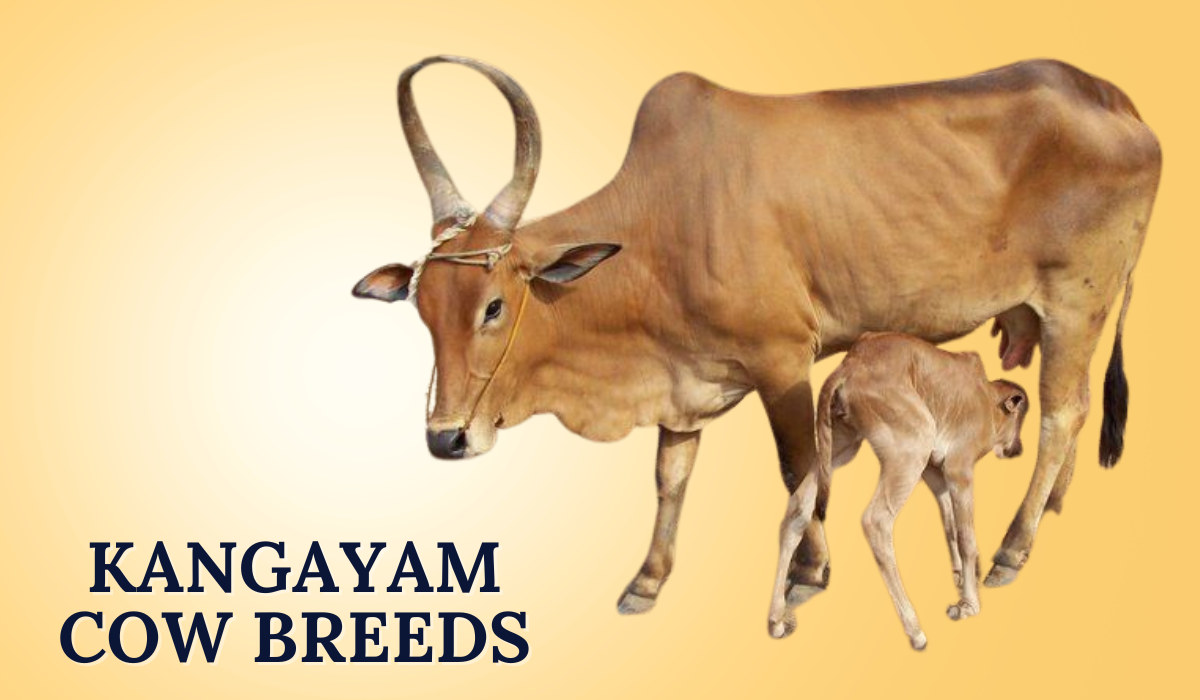The Amrit Mahal cow is one of India’s oldest and most revered indigenous cattle breeds. It was originally bred in Karnataka. Known for its exceptional strength, endurance, and adaptability, the Amrit Mahal cow plays a vital role in Indian agriculture. Unlike many other cattle breeds, it is not primarily used for dairy. Historically, it has been valued for its ability to work in tough agricultural settings. This makes it ideal for farming and transportation.
The breed is easily recognizable by its muscular frame and distinctive upward-pointing horns. The Amrit Mahal is a symbol of resilience in rural India. It plays a crucial role in traditional farming practices. This hardy breed is also prized for its low maintenance requirements. It has strong immunity, allowing it to thrive in the challenging climates of central and southern India.
While the Amrit Mahal may produce less milk than dedicated dairy breeds, its milk is still highly sought after. It is rich and nutrient-dense, making it valuable in local communities. As a reliable work animal, it is an asset to farmers. The Amrit Mahal cow also serves as a reminder of the important role indigenous breeds play in sustainable agriculture.
This article delves into the history, characteristics, and advantages of the Amrit Mahal cow. It also includes essential care tips for those interested in this remarkable breed.
History and Origin of Amrit Mahal Cows
The Amrit Mahal breed has deep roots in Karnataka, India. The rulers of the Mysore Kingdom originally bred this cow. They developed the breed through selective breeding to enhance its strength and stamina. This made it ideal for military and transport purposes. Historically, people used these cows to pull heavy loads, transport goods, and even serve as cavalry animals in wartime. This emphasis on strength has made the Amrit Mahal breed famous. Its remarkable endurance continues to be a valued trait among farmers and livestock owners in India.
Over time, Amrit Mahal cattle have spread across various regions. However, their primary breeding areas remain Karnataka’s districts, such as Chitradurga, Hassan, and Tumkur. The legacy of Amrit Mahal as a work animal has endured. Despite the increasing mechanization in agriculture, many farmers still value the breed for its traditional role and robust nature.
Physical Characteristics of Amrit Mahal Cows
Amrit Mahal cows have a distinctive appearance marked by their sturdy and athletic build. They are medium to large-sized cattle with a muscular frame, narrow face, and sharp, upward-pointing horns. These cows typically have a grayish or white coat, with darker shades around the neck and forequarters, adding to their unique and recognizable look.
The strong legs and compact body of the Amrit Mahal cow make it well-suited for arduous tasks such as plowing and cart-pulling. Their coat is smooth and short, helping them withstand high temperatures, while their hooves are tough, allowing them to navigate rugged terrain easily. These physical traits collectively make the Amrit Mahal breed one of the most durable Cow breeds in India, suited to varied environmental conditions.
Temperament and Behavior
People recognize Amrit Mahal cattle for their intelligence and alert nature, traits that historically made them suitable for defense purposes. While they are hardworking animals, they can sometimes exhibit an aggressive temperament, especially the bulls. However, they respond well to consistent training and develop a strong bond with their handlers when treated respectfully.
Their spirited temperament is part of what makes them reliable work animals. Unlike some other breeds, Amrit Mahal cows have a remarkable ability to work tirelessly, adapting to long hours of labor without showing signs of exhaustion. This endurance makes them highly beneficial for farmers who rely on manual labor and traditional farming methods.
Milk Production and Economic Value
Though the Amrit Mahal breed is not primarily a dairy breed, it does produce a moderate amount of milk. An Amrit Mahal cow typically produces around 2 to 3 liters of milk daily, which is less compared to high-yield dairy breeds like Gir or Sahiwal. However, people highly value the milk for its richness, as it contains essential nutrients and high-fat content. Local communities often prefer this milk due to its unique quality.
Despite its lower milk yield, the Amrit Mahal cow has significant economic value due to its strength and utility in farming and transportation. Many farmers find that investing in Amrit Mahal cattle for work purposes can reduce their dependency on machinery, especially in rural areas with limited access to modern farming equipment. Additionally, the breed’s minimal care requirements contribute to its overall cost-effectiveness.
Advantages of Rearing Amrit Mahal Cows
The Amrit Mahal breed offers several benefits for those involved in farming and livestock management:
- High Endurance and Strength: Amrit Mahal cows are known for their ability to work long hours in challenging conditions, making them ideal for plowing fields and transporting goods.
- Minimal Care Requirements: The breed requires relatively low maintenance, and its strong immunity reduces the risk of disease outbreaks.
- Adaptability to Climate: Amrit Mahal cattle can endure high temperatures and thrive in harsh climates, which makes them suitable for regions with intense heat or erratic weather.
- Economic Viability: Farmers can rely on Amrit Mahal cows for various agricultural tasks, reducing the need for machinery and thus lowering operational costs.
- Milk Quality: Although the milk production is modest, the milk from Amrit Mahal cows is rich in nutrients and appreciated by many local communities for its taste and quality.
Essential Care and Management Tips for Amrit Mahal Cows
While Amrit Mahal cows are generally low-maintenance, providing proper care can further enhance their productivity and longevity. Here are some key care and management practices:
- Nutrition: A balanced diet is essential for maintaining their strength and stamina. Providing adequate roughage, grains, and minerals is important, especially during peak work seasons.
- Housing and Shelter: These cattle are hardy, but they should be provided with shelter during extreme weather. A simple, well-ventilated shed protects them from rain and excessive heat.
- Healthcare: Regular vaccinations and check-ups are important to prevent common diseases. Amrit Mahal cows generally have strong immunity, but deworming and periodic health checks are recommended.
- Training: Due to their spirited nature, Amrit Mahal cattle benefit from early training, especially if they are intended for work purposes. Consistent handling can help build trust and reduce any aggressive tendencies.
- Hydration: Amrit Mahal cows require ample water, particularly in regions with high temperatures. Ensuring regular access to clean water is crucial for their health and work capacity.
Conservation and Current Status
Efforts are currently underway to preserve the Amrit Mahal breed, as mechanized farming has led to a decline in traditional breeds. Government initiatives, including selective breeding programs, focus on maintaining the population and raising awareness about the breed’s value. Organizations and farmers across Karnataka actively contribute to these conservation efforts, recognizing the importance of sustaining indigenous breeds for both cultural and practical reasons.
Conclusion: The Enduring Legacy of Amrit Mahal Cows in India
The Amrit Mahal cow stands as a testament to India’s agricultural heritage, embodying the resilience, strength, and adaptability needed to thrive in diverse and challenging environments. Though not a primary dairy breed, its endurance and utility in traditional farming make it an invaluable asset for rural communities. For farmers looking for a sustainable and robust breed that can contribute to the productivity of their farms, the Amrit Mahal cow offers a remarkable blend of strength, reliability, and minimal care needs.
As interest in indigenous breeds grows, the Amrit Mahal cow is likely to remain a symbol of India’s rich agricultural history and a reminder of the enduring importance of native livestock. By investing in the care and preservation of this unique breed, we honor a legacy that continues to benefit farming communities across generations.



